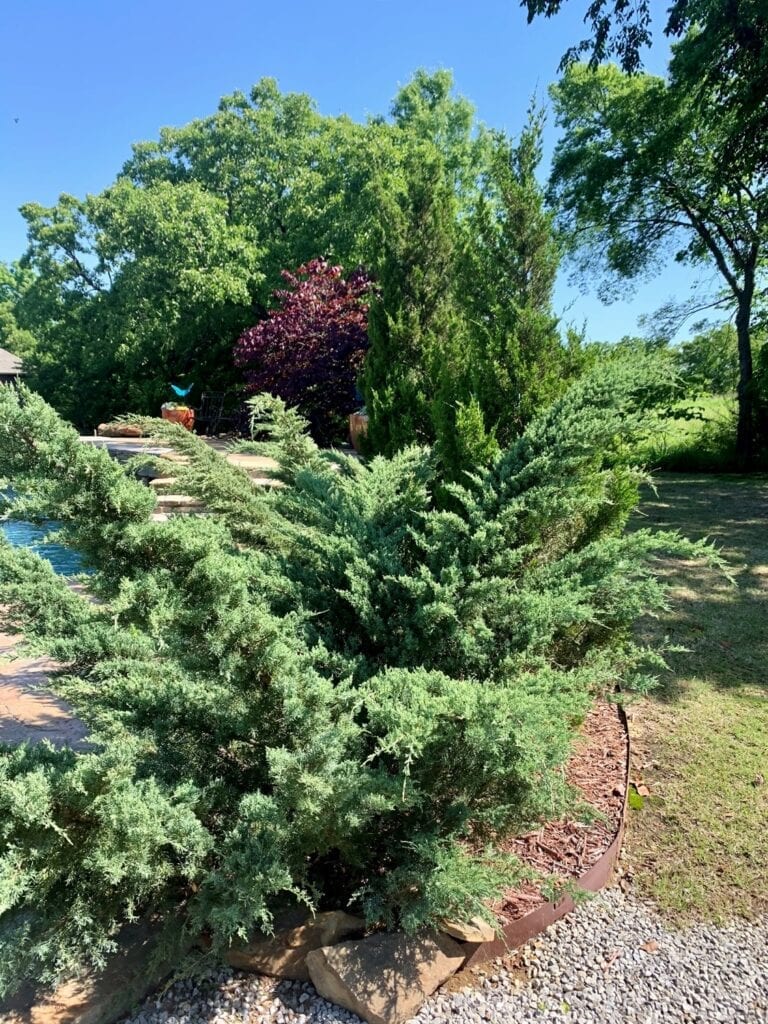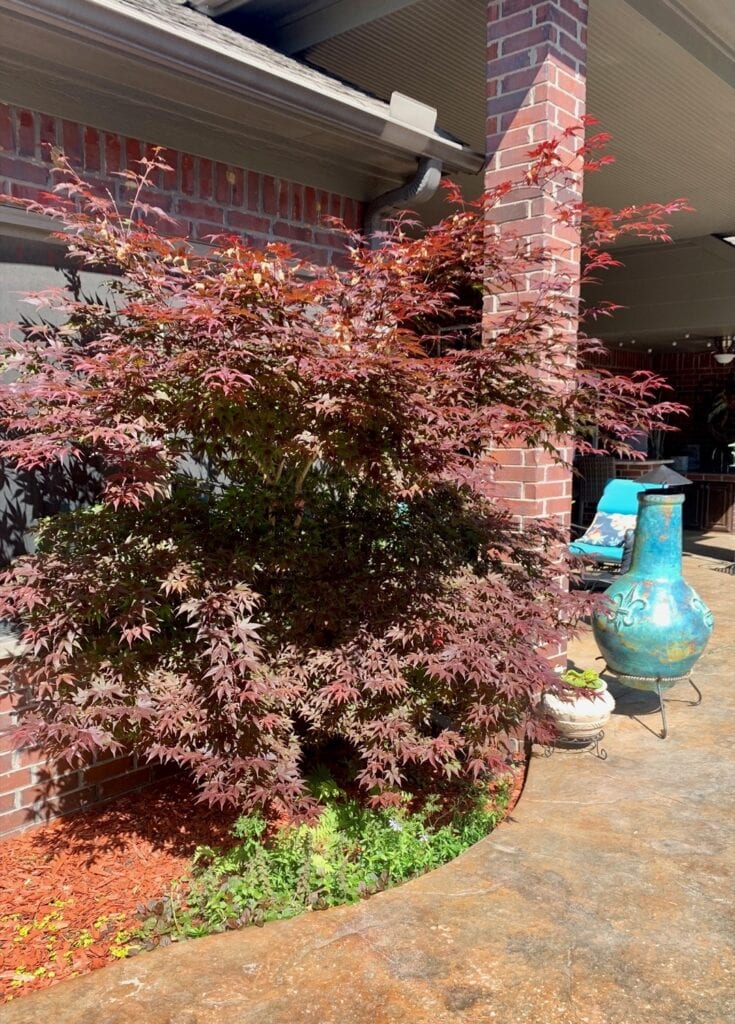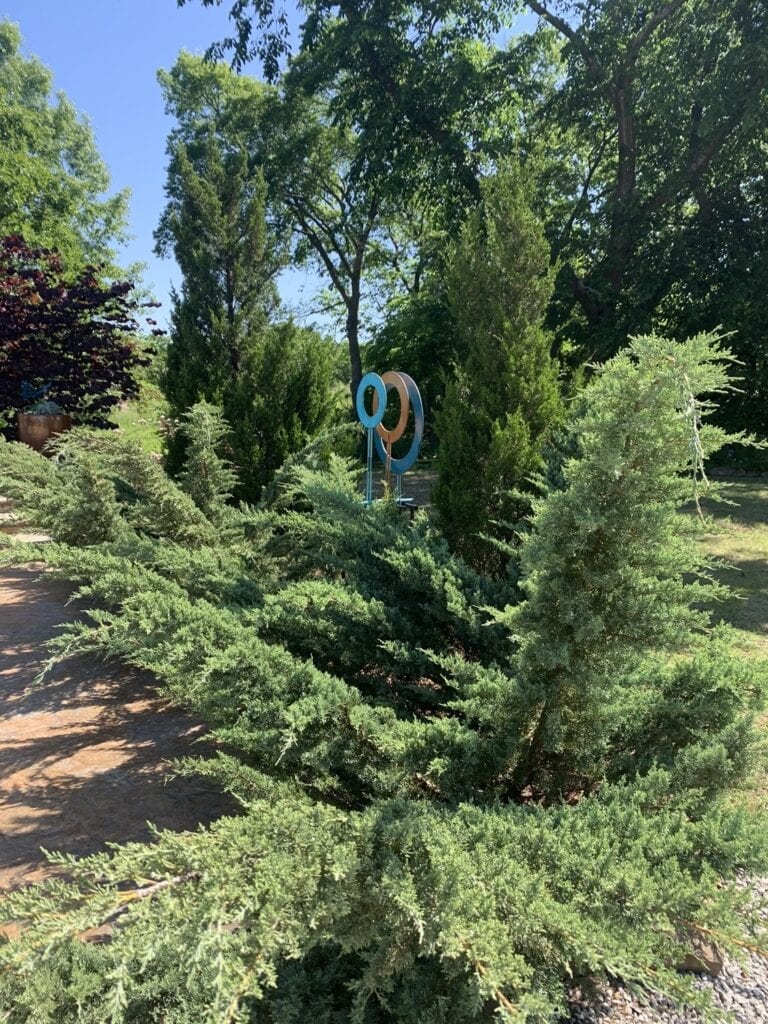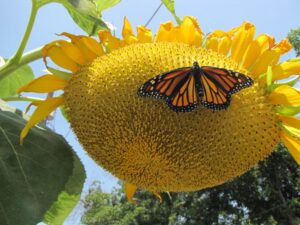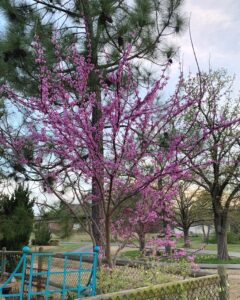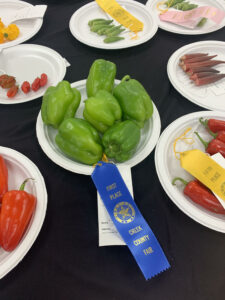Kathy Berryhill
Creek County Master Gardener
Among the nastier pests in our area, bagworms get top billing. These little brown “bags” will suddenly appear in huge numbers in late June. Their small, spindle-shaped silk bags are camouflaged with bark, foliage, leaves, and other debris. Depending on which tree needles or leaves they use to feast, the look of the bagworm can change drastically in color and form. Most often, when we first see a bagworm, soon after, there will be hundreds more on the tree. At that point, all that can be done is to remove the bags by hand.
So, what is a bagworm, actually? It is a moth whose larvae (caterpillar) hatches from a single host bag. They are found mostly on arborvitae and red cedar, but many other conifers and deciduous trees are also attacked. These include pine, spruce, cypress, juniper, willow, black locust, sycamore, apple, maple, elm, poplar, oak, birch, and even Japanese Maples.
Understanding their life cycle helps with controlling this pest. A female may have 300-1,000 eggs inside her bag, which will overwinter if on the tree. The tiny larvae are released as the weather warms and can be wind-blown to another plant in search of a food host. So, at what point can this cycle be broken?
One option is to use a bacterial spray called Bt (Bacillus thuringiensis). This is a naturally occurring bacteria available as Thuricide or Dipel. The spray has to be used when the larvae are young, which is late May through early June. The concentrated or wettable forms of Bt can be mixed in a small spray bottle or garden sprayer and then carefully applied to the foliage of affected plants. Be sure to follow application instructions for proper dosage and mixing. Timing of the spray is critical as it is not effective on the larger larvae or on the bag itself, once formed.
A second method is using a chemical spray. These chemicals are applied to the ground and absorbed into the tree. The bagworm larvae are killed as they ingest the leaves of a treated tree. Be aware that these chemicals are toxic and will also kill other pollinators, such as honeybees.
If a tree hasn’t been treated and develops bagworms, the third choice for control is to hand pick the numerous bags. Hand picking is a laborious task due to the number and location of bagworms. This activity must be ongoing as the smaller ones can often be missed until they have grown. The disposal of the bagworms is crucial to the process. If they are simply thrown into the trash, you will be in for a nasty surprise the next day when you open your trash to see that they have all migrated and are now stuck on any surface they can find! My method to prevent this is two-fold. First, I wrap the bagworms in a few layers of paper towel. Placing them underfoot, I channel my inner “grape stomping” to destroy the larvae. The remains are placed in a plastic sack, tied securely and disposed of. The downside of hand picking is the very real possibility of missing some female bags. And it only takes one female to repopulate the next generation! Additionally, the bagworm attaches itself to a branch with a strong silk thread which should be removed as it can girdle the branch as it grows, causing additional damage.
So, depending on the method you choose, it’s all about timing to provide protection for your trees. Enjoy your beautiful yard, but keep a watchful eye out for this destructive pest!


